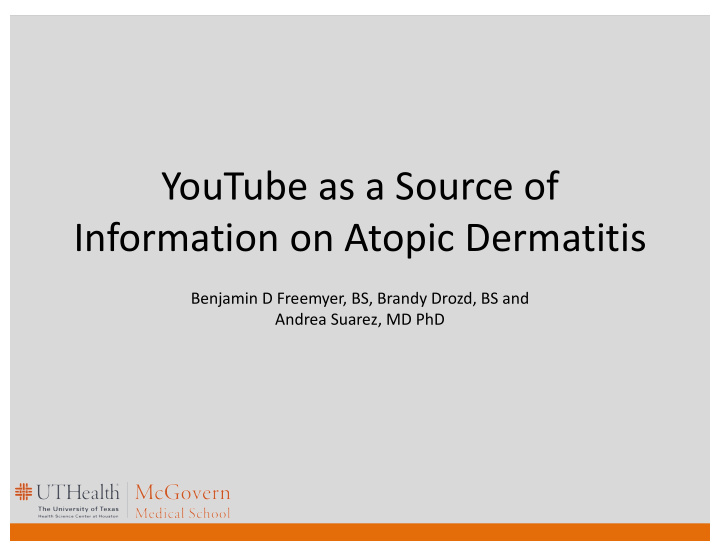



YouTube as a Source of Information on Atopic Dermatitis Benjamin D Freemyer, BS, Brandy Drozd, BS and Andrea Suarez, MD PhD
I have nothing to disclose
Background • Atopic dermatitis (AD) is common • Social and economic costs of AD are high • Improved patient education is one way to reduce the impact of AD • Patients are increasingly looking to the internet for medical health information
Aims of our study • To determine the accuracy, usefulness, and content of YouTube videos on AD and to evaluate the user engagement with these videos.
Methods • Descriptive cross-sectional study • Categorized based on upload source and main theme • Scored for reliability, content, and overall quality • User engagement assessed through Facebook shares, engagement ratio and the like ratio !"##$%&'()*+$'(,*'-*+$' – Engagement ratio: .*$/' )*+$' – Like Ratio: )*+$'(,*'-*+$'
Videos Selection 211 videos initially screened 83 Excluded • 15 non-English • 4 irrelevant • 10 incorrect disease • 53 duplicated in whole or part • 1 removed from YouTube prior to review 128 videos included
Main Theme of Videos
Upload Sources
Mean content score
Mean reliability score
Mean global quality score
Misleading videos
User Engagement
Conclusions • Healthcare professionals and professional organizations create highly educational videos on atopic dermatitis • Users engage most with videos that include personal experience • YouTube can be leveraged more effectively to disseminate health information • Further research is needed
Recommend
More recommend